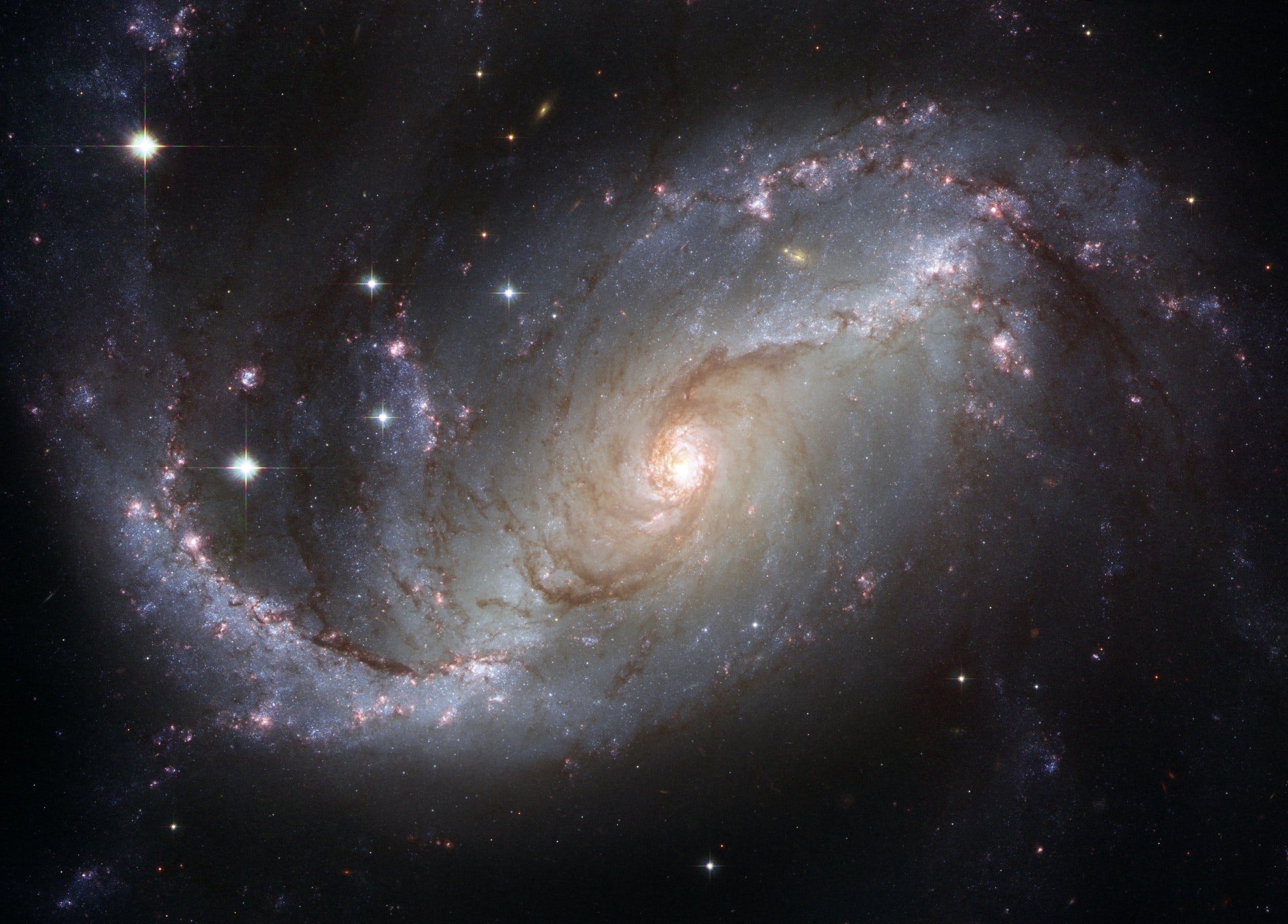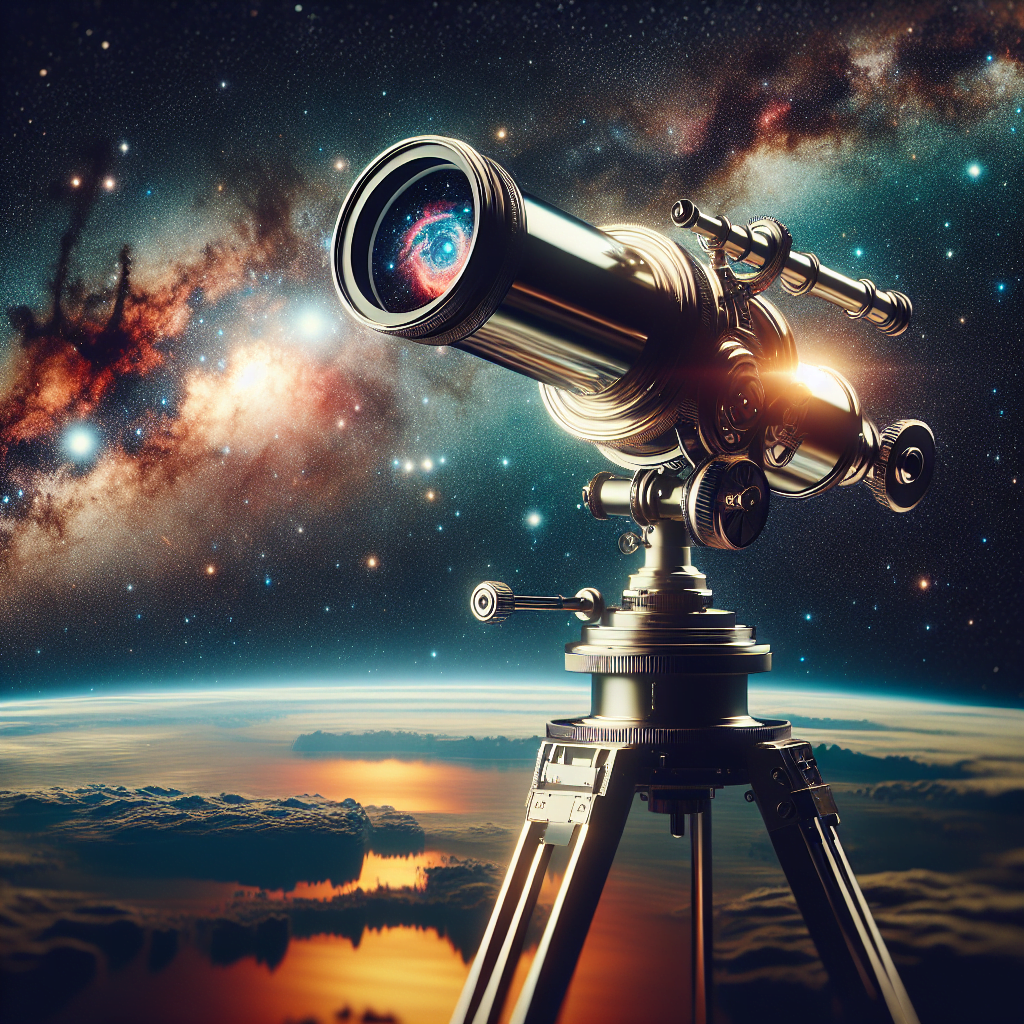Have you ever wondered how astronomers are able to observe planets that are millions of miles away? It all comes down to one crucial element: magnification. Magnification plays a pivotal role in the fascinating world of planetary observation, allowing scientists and enthusiasts alike to gain a closer look at these celestial bodies.

Table of Contents
Understanding Magnification
Basic Definition
Magnification refers to the process of enlarging an image or object to make it appear larger. In the context of observing planets, magnification allows us to bring distant celestial bodies closer and view them in greater detail. It is a vital aspect of astronomy that enables us to explore the wonders of the universe from the comfort of our own homes.
Types of Magnification
There are two primary types of magnification used in planetary observations: optical and digital. Optical magnification involves the use of specific lenses or eyepieces in telescopes to enlarge the image, while digital magnification employs advanced imaging techniques to enhance the captured image digitally.
How Magnification Works
Magnification in telescopes occurs when the incoming light rays from a celestial object pass through a series of lenses or mirrors within the telescope system. These optical components focus the light into a smaller area, which causes the image to appear larger when viewed through an eyepiece. The level of magnification is determined by the focal length of the telescope and the eyepiece used.
Importance of Magnification in Observing Planets
Enhanced Detail
One of the primary advantages of using magnification in observing planets is the ability to see fine details that would otherwise be impossible to discern with the naked eye. By enlarging the image, features such as planetary surface textures, cloud bands on gas giants, and even the rings of Saturn become more visible and distinguishable.
Identifying Celestial Features
Magnification plays a crucial role in identifying and studying celestial features on planets. It allows astronomers to distinguish craters, mountains, valleys, and other geological formations, providing valuable insights into the composition and history of these celestial bodies. By observing these features at various magnifications, astronomers can gather more comprehensive data and deepen our understanding of the universe.
Exploring Planetary Surfaces
Magnification offers a unique opportunity to explore the surfaces of celestial bodies in our solar system. It allows us to study the terrain, analyze the presence of water or other key elements, and potentially identify signs of past or present life. The ability to zoom in and explore the intricacies of planetary landscapes brings us closer to unraveling the mysteries of our cosmic neighbors.
Factors Affecting Magnification
Telescope Properties
The magnification achieved depends on the properties of the telescope being used. The aperture and focal length of the telescope are crucial factors that determine the maximum achievable magnification. Telescopes with larger apertures and longer focal lengths generally provide higher magnification capabilities.
Eyepiece Selection
The choice of eyepiece also greatly affects the magnification. Eyepieces with shorter focal lengths produce higher magnification, while longer focal length eyepieces offer lower magnification. However, it is important to strike a balance between magnification and image quality, as excessively high magnification may result in a blurry or distorted image.
Atmospheric Conditions
Atmospheric conditions can have a significant impact on the effectiveness of magnification during planetary observations. Factors such as turbulence, air pollution, and humidity can distort the image and reduce the clarity of details. To mitigate these effects, astronomers often wait for stable atmospheric conditions or utilize advanced techniques such as adaptive optics.
Choosing the Right Magnification
Telescope Aperture and Focal Length
When selecting the appropriate magnification for observing planets, it is essential to consider the telescope’s aperture and focal length. Telescopes with larger apertures and longer focal lengths can offer higher magnification capabilities, allowing for better visibility of planetary details. However, it’s important to find a balance between magnification and image quality to ensure a clear and sharp image.
Understanding the Planet’s Size
Understanding the size of the planet being observed is crucial in determining the ideal magnification. Planets with larger apparent diameters, such as Jupiter or Saturn, can handle higher magnifications, while smaller planets like Mars or Mercury may require lower magnifications to maintain image clarity and visibility.
Balancing Magnification and Image Quality
While higher magnification may seem enticing, it is essential to strike a balance between magnification and image quality. Pushing the limits of magnification beyond what the telescope and atmospheric conditions can handle may result in a degraded image with reduced sharpness, clarity, and contrast. Experimentation and experience will help you find the optimal magnification for different observing conditions.

Common Magnifications in Planetary Observations
Low Power (20x – 60x)
Low power magnifications are suitable for observing planets when you want to view the entire planet within the field of view. They provide a wider perspective, allowing you to appreciate the planet’s size, coloration, and broader atmospheric features. Low power magnifications are also useful for observing multiple planets or capturing images of larger groups of celestial objects.
Medium Power (60x – 150x)
Medium power magnifications strike a balance between a closer view and a wider field of view. They enable observers to zoom in on specific features of planets, such as prominent cloud bands, planetary rings, or lunar craters. This range is often preferred for detailed observations, especially when trying to capture finer textures and structures on the planet’s surface.
High Power (150x and above)
High power magnifications are used for capturing the finest details on a planet’s surface or observing smaller features such as individual craters or atmospheric disturbances. However, higher magnifications are generally more susceptible to atmospheric turbulence and require stable atmospheric conditions to achieve optimum image quality.
Magnification Limitations
Atmospheric Turbulence
A major limitation of magnification in planetary observations is atmospheric turbulence. The Earth’s atmosphere is not perfectly stable, causing the image to appear distorted or blurred. This effect is particularly pronounced at higher magnifications, where atmospheric disturbances can significantly degrade the image quality and detail.
Optical Aberrations
Optical aberrations are another limitation when using high magnification. These imperfections in the telescope’s optics can cause light to scatter or deviate, resulting in a loss of image sharpness or distortions. Regular maintenance and careful selection of high-quality optics can help minimize the impact of optical aberrations.
Equipment Constraints
The limitations of the telescope and eyepieces being used can also affect magnification. Lower-quality optics may not provide the same level of detail or clarity at high magnifications as more advanced equipment. Investing in high-quality telescopes and eyepieces can help overcome these limitations, allowing for better magnification and more detailed observations.

Achieving Maximum Detail with Magnification
Steady Viewing Conditions
To achieve maximum detail with magnification, it is crucial to observe under steady viewing conditions. This means waiting for nights with minimal atmospheric disturbances, such as on calm, clear evenings. Stable atmospheric conditions minimize the effects of turbulence and allow for sharper, more detailed images.
Utilizing Filters
Filters can be a valuable tool in enhancing planetary observations at higher magnifications. Filters specifically designed for astronomical use can enhance contrast, reduce glare, and reveal finer details. For example, a color filter may enhance certain atmospheric or surface features on a planet, while a polarizing filter can minimize reflections and improve image clarity.
Advanced Imaging Techniques
In addition to eyepiece observation, advanced imaging techniques can be employed to maximize the detail captured during planetary observations. Techniques such as astrophotography or stacking multiple images can enhance the level of detail and reveal features that may be challenging to see visually. These techniques require additional equipment and software but can provide stunning and informative results.
Balancing Magnification and Brightness
Avoiding Over-Magnification
While higher magnification can reveal finer details, it is essential to avoid over-magnifying the image. Over-magnification can result in a dimmer image, as the same amount of incoming light is spread over a larger area. Finding the right balance between magnification and brightness is crucial for achieving optimum image quality and visibility.
Adjusting for Optimum Lighting
Optimum lighting conditions are vital for achieving the best possible view of a planet at a particular magnification. Observing planets when they are at their highest point in the sky can minimize the atmospheric disturbances and light pollution that can affect the image quality. Experimenting with different lighting conditions can help determine the optimal time for observing specific planets at different magnifications.
Considering Planet’s Distance
The distance between Earth and the observed planet also impacts the required magnification. Planets further away from Earth necessitate higher magnification to reveal fine details. Conversely, planets closer to Earth, such as those within our own solar system, may require lower magnification to capture the surface features and atmospheric conditions effectively.

Effects of Magnification on Planetary Observations
Increased Image Scale
A direct effect of magnification is an increased image scale. Higher magnifications enlarge the image, allowing observers to see smaller details that would otherwise be invisible. This increase in image scale is particularly important when studying planetary surfaces, as it enables us to observe smaller structures, like individual craters or geological formations, with greater clarity.
Reduced Field of View
As magnification increases, the field of view decreases. Higher magnifications narrow the view, focusing on a smaller portion of the planet’s surface. While this reduction in the field of view allows for more detailed observations, it also limits the observer’s ability to see the entire planet or multiple features simultaneously.
Impact on Observing Conditions
The choice of magnification can significantly impact the quality of observing conditions. As magnification increases, the image becomes more susceptible to atmospheric turbulence, reducing image clarity and detail. Unstable atmospheric conditions can present challenges when using high magnifications, making it difficult to achieve the desired level of detail.
Technology Advancements in Magnification
Digital Magnification
Digital magnification has revolutionized planetary observations, enabling astronomers to enhance and manipulate the captured images. Cameras and software have made it possible to digitally zoom in on specific areas of interest and apply various image processing techniques, such as sharpening or enhancing contrast, to reveal finer details.
Adaptive Optics
Adaptive optics is an advanced technology used to compensate for atmospheric turbulence during observations. By employing real-time corrections, adaptive optics systems actively adjust the telescope’s optics to counteract the effects of atmospheric disturbances, resulting in sharper, clearer images at high magnifications. This technology has significantly improved the quality of planetary observations.
Future Possibilities
The future holds exciting possibilities for magnification in planetary observations. Advancements in telescope and optics technology, as well as the development of space-based telescopes and missions, will further enhance our ability to magnify and explore planets in our solar system and beyond. These advancements will provide astronomers with unprecedented levels of detail and insights into the mysteries of the universe.
In conclusion, magnification plays a vital role in observing planets by enabling astronomers to bring celestial objects closer, examine their features in greater detail, and explore their surfaces. Understanding the factors affecting magnification, choosing the right magnification, and balancing it with image quality and brightness are essential for achieving optimum results. Despite certain limitations, advancements in technology continue to push the boundaries of magnification, opening up new possibilities for planetary observations and unveiling the secrets of the universe. So, grab your telescope, adjust the magnification, and embark on a journey to discover the wonders of our cosmic neighbors.

